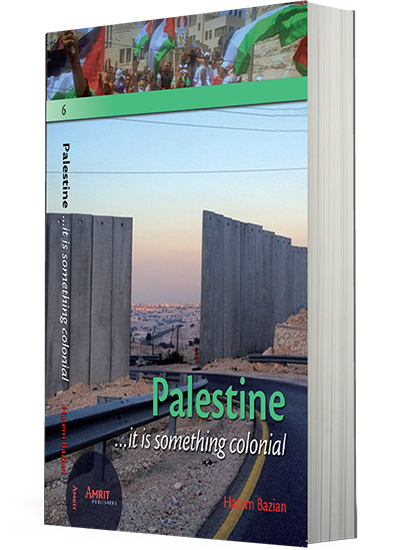Through successive periods of intervention by the British, Jordanian and Israeli governments, Palestinians as a society, have been maintained in a predominantly dependent agriculture and agrarian economy. Family, clan and tribe closely identified with agriculture and land ownership has served as a stabilizing factor for the Occupied population. In more than one region in the occupied territories, the social structure has been maintained through a land that served to provide the needed stability against invasive policies by successive Israeli governments. Although the Nikba, among many other elements, constituted a process of forced social displacement still felt today including the presence of some 6 million refugees, Palestinian society nevertheless managed to maintain a sense of balance as long as its link to the land in the remaining parts was maintained.
By constructing the Apartheid Wall, the Israeli government managed to bring about a social transformation in the Occupied Territories. The basic underpinnings of Palestinian daily existence has been altered beyond recognition and aided sadly speaking by a welling PA leadership. The basic goal of Zionism, “a land without a people for a people without a land,” informs the current policies propagated by successive Israeli government seeking to alter the demographic and land ownership in historical Palestine.
From the very inception of the idea of the Judenstate in Palestine, demography has been Zionism’s curse. It remained so after the emergence of the actual state, and continues to be a pernicious impediment in the march toward “normalizing” the “Jewish State,” if such an eventuality is even possible. In its optimal conceptualization,Judenstate can only occur when the last Palestinian is removed from historical Palestine and the land itself is redeemed into its “rightful Jewish owners,” returning under the secular Zionist movement to claim “God’s gift” to them thousands years earlier.
It can be readily observed that when ideology confronts reality, it is reality that will triumph. However, partisans of ideology rarely declare defeat; rather they attempt to force reality into their distorted and discredited box. As for the Zionism ideological box, an empty land, was/is confronted by the reality of Palestinian presence. Rather than declaring defeat “they” collectively opted to force a new reality; the unachievable-forcing of the indigenous population to move out through the use of violence, daily humiliations, a suffocating occupation and financial inducements directed at the elite.
For Israel, the Apartheid Wall is intended to force new economic and political realities so as to alter the demographic landscape in the Occupied Territories. When we examine the completed sections of the Apartheid Wall, we find the path following a design focused on solidifying control over confiscated lands and water resources available under West Bank hills and permission of another wholesale transfer of fertile lands into the hands of Jewish settlers. Facts on the ground has been the modus operandi of successive Israeli governments; left, center and far right.
The idea is simple enough for Israeli planners given that facts created on the ground, be it a settlement, a military post, or an Apartheid Wall, all shape future discussions and “negotiations” over “disputed territories.” For Israeli politicians, facts on the ground, do not merely prejudice future “negotiations” but shape and determine the outcome when coupled with leverage brought to bear on the Palestinians through American and Arab governments involvement. The Apartheid Wall, just like settlements, is intended to shape future “negotiations” between the Palestinians and Israelis. Whether this will take place or not is secondary; the conditions under which they will occur is for the most part been determined.
The best case scenario from Israel’s perspective is a solution that has a “Palestinian state” emerging in the West Bank and the Gaza Strip following the patterns and structures of homelands in Apartheid’s South Africa, but with some modification. As such, Palestinian independent zones can be constructed inside the West Bank, disjointed and having no common border other than possibly a freeway system controlled and secured by Israel or a Jordanian specially trained security force. The population will have no viable economy to present any challenge to Israel, while continuing to be a captive labor market for enterprises both in border areas and more so in free trade zones set up in the West Bank or Jordan to remove internal population pressures. In addition, Israel with some Palestinian elite will create joint ventures focused possibly on the tech sector to create the impression that development under Apartheid maybe achievable.
Israel wants relief from the growing demographic problem inside Israel proper and in the Occupied Territories. We are at a point in which the number of Arabs is already equal if not exceeding that of Jews in historical Palestine. This point has not fallen on deaf ears in the Israeli political establishment viewing it as a threat to be dealt with; otherwise the “herds” of Palestinian Arabs will overtake the “purity” of the “Jewish state” thus ending the ideological Zionist project. The Apartheid Wall should be understood from the point of view that Zionist ideological dinosaurs want to shape reality after the dam has already broken and Noah’s type floods are visible all around.
Transfer of the Palestinians, an old idea tried en masse by the Israelis at least twice with suspect success, is being promoted as a possible solution to the demographic problem. Through the construction of the massive Apartheid Wall and altering of the Palestinian landscape, the Israeli leadership is counting on a massive dislocation caused by disruption of long standing economic patterns resulting in transfer induced by non-military means. Often mass transfers occur in the mixt of military hostility, a situation that might develop in the future. Until such a point, Israeli politicians have to plan for the immediate period through the use of non-military means to bring about a population movement across the Jordan River or any other location in the region.
Looking back at 1948, Israel all along wanted to distance itself from taking any responsibility for the massive dislocation of 750,000 Palestinians from their homes, business, villages and cities. Thus in the current approach, absent major events (which is open to change in the near future) transfer can be brought about by non-military means by a number of policies. The Apartheid Wall is paramount, intending economic disruption and dislocation which can lead a large number of Palestinians to seek employment outside of historical Palestine. The northern part of the Wall is already impacting some 200-400,000 people, many of whom have been engaged in agriculture for generations knowing no other profession.
Aside from the lands taken by Israel in 1948, the northern section of the West Bank is the bread basket and the agriculture economic engine for the occupied territories. In addition, water wells dotting the northern landscape are available in large quantities close to the surface, so that no deep digging is needed as they are only a few feet below ground in much of the slope areas. By removing the bread basket and the water, the Palestinians are left at Israel’s mercy for their daily food. In the context of Occupation it means the difference between life or death for many. In the northern cities, the impact has already been felt with people moving from one area to another and those who find their land and houses blockaded by the Apartheid Wall are forced to chose between their lands and their extended family, tribe or Palestinian community in general. The situation is made worse by a PA leadership that provides security to the Occupation and acts against the best interests of the Palestinians.
One issue confronting barricaded land on the western side of the Wall has to do with old Ottoman law for public lands which hold that land which is not cultivated by their owners for three years in a row are to become public state property. The Ottoman law is based on Islamic law permitting individuals to bring into cultivation public lands and rights of ownership are secured due to efforts and labor expended to make it a producing property. If the farmer or the individual stopped cultivating the land three years in a row, then the property went back to the state so another person could possibly try to keep it in production. The Apartheid Wall is utilized by the Israelis to prevent farmers from reaching their own land (i.e. these are not public lands under Ottoman Law since title is held) and after three years the Ottoman law is introduced to justify the stealing of private property.
Also important to understand is that Israel considers the whole of the West Bank a “disputed territory” which means the official “legal bodies” do not recognize for the most part earlier documents issued by the Ottoman, British and Jordanian authorities, while at the same time using pre-State law to justify the impending confiscation of vast tracts of fertile lands in the northern section of the West Bank. Through this process Israel has managed in the past to hide its tracks in land confiscation while making it appear as if fault is on the irresponsible Palestinians and “traditional” Islamic law.
The Israelis are bringing all this to bear at a time where they feel that all the cards are to their benefit. Furthermore, the US, their key ally, is not in any position to apply pressure on these matters and the Arab and Muslim world are in the middle of a massive internal confrontation and chaos. All the major states in the region are not in a position to lend support to the Palestinians and few of them have already completely shifted their attention away from Palestine and consider Israel a strategic ally. In addition, the upcoming American elections provide the best conditions to push for the most favorable agenda for Israel since no one will dare to challenge them at such a critical moment.

